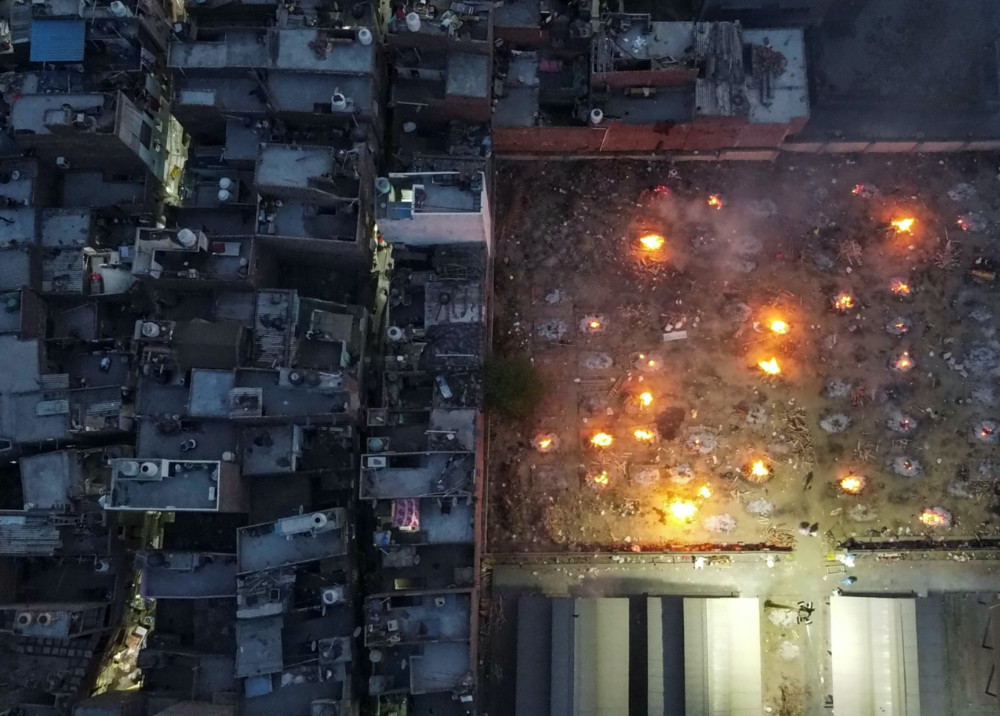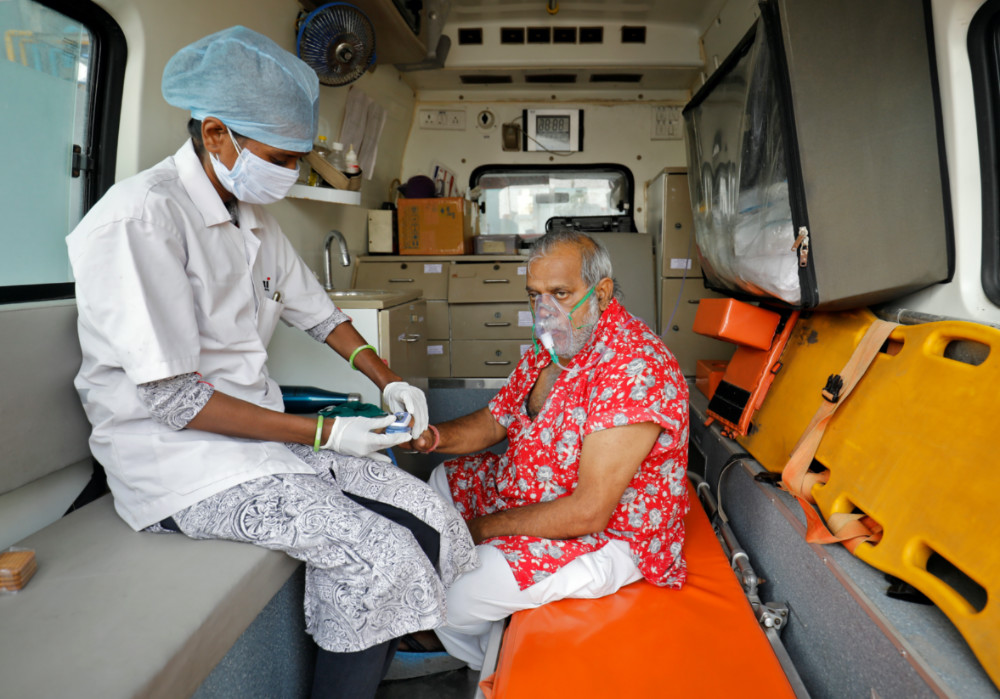New Delhi, India
Reuters
India recorded the world’s highest daily tally of 314,835 COVID-19 infections on Thursday as a second wave of the pandemic raised new fears about the ability of crumbling health services to cope.
Health officials across northern and western India, including the capital, New Delhi, said they were in crisis, with most hospitals full and running out of oxygen.

A mass cremation of victims who died due to the coronavirus disease (COVID-19), is seen at a crematorium ground in New Delhi, India, on 22nd April, 2021. PICTURE: Reuters/Danish Siddiqui
Some doctors advised patients to stay at home, while a crematorium in the eastern city of Muzaffarpur said it was being overwhelmed with bodies, and grieving families had to wait their turn. A crematorium east of Delhi built funeral pyres in its parking lot.
“Right now there are no beds, no oxygen. Everything else is secondary,” said Shahid Jameel, a virologist and director of the Trivedi School of Biosciences at Ashoka University.
“The infrastructure is crumbling.”
Six hospitals in New Delhi had run out of oxygen, according to a tally shared by the city government, and the city’s deputy chief minister said neighbouring states were holding back supplies for their own needs.
“It might become difficult for hospitals here to save lives,” Manish Sisodia said in a televised address.
Another 2,104 people died in the space of a day, taking India’s cumulative toll to 184,657, according to the health ministry data. The previous record rise in cases was in the United States, which had 297,430 new cases on one day in January, though its infection rate has since fallen sharply.
“India weeps”
Television showed images of people with empty oxygen cylinders crowding refilling facilities, hoping to save relatives in hospital.
In the western city of Ahmedabad, a man strapped to an oxygen cylinder lay in the back of a car outside a hospital as he waited for a bed.
“Helplessness,” tweeted former foreign secretary Nirupama Menon Rao. “India weeps.”
“We never thought a second wave would hit us so hard,” Kiran Mazumdar Shaw, executive chairman of the healthcare firm Biocon, wrote in the Economic Times.
“Complacency led to unanticipated shortages of medicines, medical supplies and hospital beds.”
Delhi Health Minister Satyendar Jain said the city needed about 5,000 more intensive care beds.
Similar surges of infections, notably in South America, are threatening to overwhelm other health services.
China said it was willing to help India, although it was not immediately clear what this might consist of.
Only a tiny fraction of the Indian population has received a vaccination.

A paramedic uses an oximeter to check the oxygen level of a patient inside an ambulance while waiting to enter a COVID-19 hospital for treatment, amidst the spread of the coronavirus disease (COVID-19) in Ahmedabad, India, on 22nd April. PICTURE: Reuters/Amit Dave.
Authorities have announced vaccines will be available to anyone over 18 from 1st May, but experts say there will not be enough for the 600 million people who will become eligible.
Health experts say India let its guard down during the winter, when daily cases were about 10,000 and seemed to be under control, and lifted restrictions to allow big gatherings.
More infectious variants
New, more infectious variants of the virus, in particular a “double mutant” variant that originated in India, have helped accelerate the surge, but many also blame the politicians.
Prime Minister Narendra Modi’s government ordered an extensive lockdown in the early stages of the pandemic but has been wary of the economic costs of more tough restrictions.
In recent weeks, the government has been criticised for holding packed political rallies for local elections and allowing a Hindu festival at which millions gathered.
“The second wave is a consequence of complacency and mixing and mass gatherings. You don’t need a variant to explain the second wave,” said Ramanan Laxminarayan of the Center for Disease Dynamics, Economics and Policy in New Delhi.
This week, Modi urged state governments to use lockdowns as a last resort. He asked people to stay indoors and said the government was working to expand oxygen and vaccine supplies.
He cancelled a visit to West Bengal scheduled for Friday.
A YouTube stream showed a hundred or more supporters attended Interior Minister Amit Shah’s election rally in Harirampur on Thursday.
Most donned saffron-coloured face-masks — in sharp contrast to the thousands seen at similar gatherings this month — but were still seated close together.
“We are dying here, and they are holding rallies there,” one woman in the northern city of Lucknow said on television.
Madhukar Pai, professor of epidemiology at McGill University in Canada, said India was a cautionary tale for the world.
“If we declare success too soon, open up everything, give up on public health, and not vaccinate rapidly, the new variants can be devastating,” he tweeted.
– Additional reporting by SANJEEV MIGLANI, KRISHNA N DAS, RUPAM JAIN, ANURON KUMAR MITRA, ALASDAIR PAL, SUMIT KHANNA, and SHILPA JAMKHANDIKAR.






